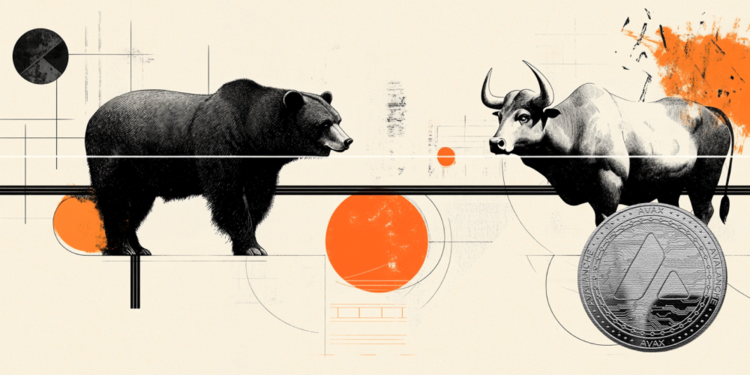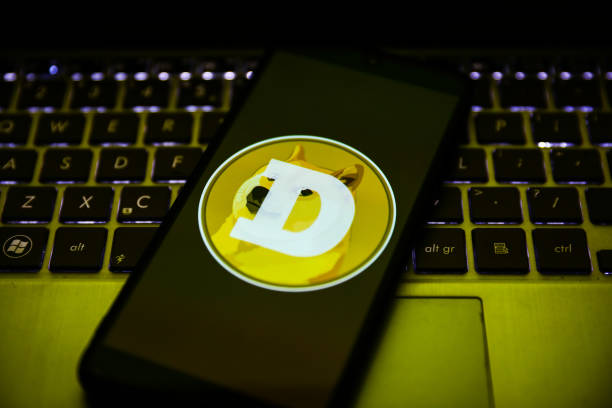What is Kadena? KDA Price Prediction 2025, 2026 to 2030

In the dynamic realm of blockchain technology, Kadena stands as a remarkable player, offering innovative solutions that reimagine how the world interacts and transacts. Anchored in the visionary idea that blockchain can revolutionize global interactions, Kadena has built a unique ecosystem from the ground up.
At the heart of this ecosystem lies KDA, its native digital currency, designed to fuel transactions and operations within the platform. But beyond its foundational role, KDA’s value holds intrigue for investors and enthusiasts alike.
Is it a good investment and what kind of future does it hold? In this article, let’s find out and take a a glimpse into the possibilities that lie ahead for KDA’s value in the ever-evolving landscape of cryptocurrency. We decode the trends and fluctuations in its price, that offer valuable insights into its potential future trajectory.
About KDA
| Name | Kadena |
| Token | KDA |
| Price (as of 22nd June 2025) |
$0.3536 |
| Circulating Supply | 320,446,776 KDA |
| Total Supply | 320,804,354 KDA |
| Max. Supply | 1,000,000,000 KDA |
| Circulating market cap |
$113,184,796 |
| Fully diluted market cap |
$113,311,096 |
| Total Value Locked | $7,33,640 |
| Website | Click here |
| Whitepaper | Click here |
| ATH | $27.64 |
| ATL | $0.06581 |
What is Kadena?
Kadena is a pioneering blockchain platform that envisions transforming global interactions and transactions through innovative technology. Founded on the belief that blockchain could revolutionize traditional business processes, Kadena takes a unique approach by reimagining chain technology and its integration with the business world. This led to the creation of a proprietary chain architecture and specialized tools designed to make blockchain practical for enterprises. The platform achieved a remarkable feat by becoming the first and only Layer-1 blockchain that addresses scalability while preserving the security and decentralization of Proof-of-Work (PoW).
Kadena’s core components include its multi-chain structure known as Chainweb, a hybrid consensus mechanism that combines DAG and PoW. This architecture enables Kadena to significantly increase throughput and security, catering to high-volume scenarios like global financial systems. The platform also introduces Pact, a user-friendly smart contract language, enhancing the ease of creating and deploying secure contracts. Kadena’s vision is to create a comprehensive ecosystem for builders, fostering innovation across various domains, from DeFi (Decentralised Finance) and oracles to smart contracts and more.
What is KDA?
KDA is the native digital currency of the Kadena blockchain platform. It functions as a means of payment and a reward mechanism within the network. Similar to Ethereum’s ETH, KDA is used to facilitate transactions and pay for various operations on the Kadena blockchain. It serves a dual role as a miner’s reward for validating and adding new blocks to the network and as a transaction fee for users who want their transactions to be included in blocks.
KDA’s significance extends beyond its utility within the Kadena ecosystem. It represents ownership and participation in the platform, enabling users to engage in various activities such as deploying smart contracts, participating in governance decisions, and interacting with decentralized applications (dApps) within the Kadena ecosystem.
The total supply of KDA is fixed at 1 billion tokens, which will be mined over a span of 120 years. Its availability and distribution are crucial components of Kadena’s economic model, designed to incentivize network security, user participation, and the growth of the ecosystem.
Use Cases of Kadena
Kadena’s versatile blockchain platform offers a multitude of use cases across industries, owing to its unique architecture and features:
Enterprise Solutions: Kadena’s scalable infrastructure and secure smart contract language make it suitable for businesses to develop and deploy applications tailored to their needs.
Financial Services: The platform’s scalability and transaction speed are suitable for powering global financial systems, handling high-frequency trading, and settling a large number of transactions with minimal delay.
DeFi (Decentralized Finance): Kadena’s low-cost, high-throughput, and secure nature make it suitable for DeFi applications such as decentralized exchanges, lending platforms, and more.
Supply Chain Management: Kadena’s ability to handle a high volume of transactions makes it ideal for tracing and recording supply chain activities, ensuring transparency and authenticity.
Tokenization: KDA and Kadena’s infrastructure can be used to tokenize real-world assets, enabling fractional ownership and trading of traditionally illiquid assets.
Healthcare: Securely storing and sharing patient data, managing pharmaceutical supply chains, and enabling efficient healthcare data exchange are potential applications.
Gaming: High transaction throughput and low latency can enhance in-game economies, enable provably fair gameplay, and streamline digital asset trading.
How is KDA different from its peers?
KDA distinguishes itself from its peers through its unique combination of technologies and design principles:
Scalability and Security: KDA’s multi-chain architecture, combining DAG and PoW, allows for high throughput while maintaining robust security, unlike traditional PoW chains.
Pact Smart Contracts: KDA introduces Pact, a human-readable smart contract language that ensures safer and more accessible contract development, automatically detecting bugs and ensuring security.
Industrial Scalability: KDA’s capacity to handle millions of transactions per second makes it suitable for global financial systems and real-world enterprise applications, differentiating it from many blockchain platforms.
Energy Efficiency: Unlike some other PoW chains, KDA maintains energy efficiency even at scale, offering a more sustainable approach to blockchain technology.
Crypto Gas Stations: KDA’s introduction of crypto gas stations for businesses eliminates transaction fees for customers, making it more appealing for mass adoption of dApps.
How does KDA work?
KDA operates on a unique hybrid consensus mechanism that combines a directed acyclic graph (DAG) with proof-of-work (PoW). This innovative approach, known as Chainweb, involves the braiding of multiple chains together, significantly boosting throughput while maintaining security.
In the Chainweb structure, each chain operates as an independent blockchain, confirming blocks of three peer chains simultaneously. This parallelization enables KDA to achieve high throughput and transaction speeds, making it suitable for global financial systems and high-frequency applications. Security is enhanced by requiring an attacker to simultaneously attack multiple chains.
KDA’s native token, KDA, is used for transactions and as a reward for miners who validate transactions and create new blocks. This dual-purpose token ensures smooth operations within the ecosystem while incentivizing network security and participation.
KDA’s innovative Pact smart contract language allows for the creation of secure and efficient contracts, automatically detecting bugs and enhancing readability for both developers and non-developers.
KDA Tokenomics and Distribution
KDA, the native digital currency powering the Kadena blockchain, showcases a distinctive tokenomics framework that profoundly influences the platform’s dynamics. Grasping the nuances of KDA’s token distribution and economic principles offers valuable insights into its functionality and potential value.
Token Supply and Allocation
KDA’s fixed total supply of 1 billion tokens serves as a deliberate move to maintain scarcity and ensure long-term viability. The meticulous allocation of tokens serves specific purposes within the Kadena ecosystem:
Mining: A substantial share of KDA, totaling 700 million tokens, is earmarked for miners. Distributed over a span of 100+ years, these tokens incentivize transaction validation and block addition, bolstering network security and participation.
Platform Share: About 200 million tokens are allocated for gradual emission over nine years to fuel platform growth. This allocation fosters ecosystem expansion, stimulating innovation, and seamless integration across diverse applications.
Investors, Strategic Reserve, and Contributors: A strategic reserve of 90 million tokens supports investors, strategic partners, and contributors who drive the platform’s progress and adoption.
Burned at Launch: An inaugural burning of 10 million KDA tokens reinforces token scarcity, marking the commencement of a balanced token economy.
Token Utility and Role
KDA functions as the lifeblood of the Kadena ecosystem, empowering transactions, smart contracts, and interactions within the platform. It operates as both a transaction fee and a miner’s reward, underpinning operational efficiency and security. KDA holders actively engage in governance, smart contract deployment, and dApp interaction, making it a versatile asset that shapes the ecosystem’s trajectory.
KDA’s tokenomics strikes a harmonious equilibrium by incentivizing participants, fostering innovation, and maintaining Kadena’s blockchain stability. As the platform evolves, KDA’s pivotal role as a foundational element of value and utility persists, steering its transformative journey.
Where Can You Trade in KDA?
KDA is traded on various cryptocurrency exchanges, including Binance, OKX, Mandala Exchange, KuCoin, and Gate.io. These platforms offer a marketplace for users to buy, sell, and trade KDA tokens, providing liquidity and accessibility to those interested in participating in the Kadena ecosystem.
KDA Price Prediction 2025, 2026 to 2030
KDA Price Prediction 2025
| When | Maximum Price | Minimum Price |
| July 2025 | $0.528 | $0.326 |
| August 2025 | $0.539 | $0.385 |
| September 2025 | $0.449 | $0.362 |
| October 2025 | $0.651 | $0.465 |
| November 2025 | $0.879 | $0.709 |
| December 2025 | $1.152 | $0.823 |
As we move through 2025, KDA is expected to display dynamic growth. By July, KDA is anticipated to reach a maximum of $0.528 and a minimum of $0.326. As we approach December, KDA is projected to achieve a maximum of $1.152 and a minimum of $0.823.
KDA Price Prediction 2026
| When | Maximum Price | Minimum Price |
| January 2026 | $1.440 | $1.161 |
| February 2026 | $1.028 | $0.735 |
| March 2026 | $0.791 | $0.638 |
| April 2026 | $0.586 | $0.419 |
| May 2026 | $0.419 | $0.338 |
| June 2026 | $0.502 | $0.359 |
| July 2026 | $0.415 | $0.335 |
| August 2026 | $0.377 | $0.270 |
| September 2026 | $0.302 | $0.243 |
| October 2026 | $0.398 | $0.273 |
| November 2026 | $0.447 | $0.339 |
| December 2026 | $0.371 | $0.265 |
As we step into 2026, KDA is expected to exhibit varied price movements. By January, KDA is anticipated to achieve a maximum of $1.440 and a minimum of $1.161. As we step into December, KDA is projected to reach a maximum of $0.371 and a minimum of $0.265.
KDA Price Prediction 2027
| When | Maximum Price | Minimum Price |
| January 2027 | $0.408 | $0.329 |
| February 2027 | $0.489 | $0.349 |
| March 2027 | $0.445 | $0.359 |
| April 2027 | $0.521 | $0.354 |
| May 2027 | $0.538 | $0.434 |
| June 2027 | $0.414 | $0.296 |
| July 2027 | $0.331 | $0.267 |
| August 2027 | $0.257 | $0.183 |
| September 2027 | $0.321 | $0.259 |
| October 2027 | $0.401 | $0.287 |
| November 2027 | $0.441 | $0.356 |
| December 2027 | $0.494 | $0.353 |
KDA Price Prediction 2028-2030
| When | Maximum Price | Minimum Price |
| January 2028 | $0.544 | $0.438 |
| February 2028 | $0.489 | $0.349 |
| March 2028 | $0.445 | $0.359 |
| April 2028 | $0.537 | $0.353 |
| May 2028 | $0.411 | $0.331 |
| June 2028 | $0.374 | $0.267 |
| July 2028 | $0.467 | $0.377 |
| August 2028 | $0.602 | $0.430 |
| September 2028 | $0.723 | $0.583 |
| October 2028 | $0.657 | $0.469 |
| November 2028 | $0.664 | $0.535 |
| December 2028 | $0.743 | $0.531 |
| January 2029 | $0.670 | $0.541 |
| February 2029 | $0.789 | $0.563 |
| March 2029 | $0.868 | $0.700 |
| April 2029 | $1.033 | $0.738 |
| May 2029 | $1.123 | $0.905 |
| June 2029 | $1.235 | $0.882 |
| July 2029 | $1.176 | $0.948 |
| August 2029 | $0.980 | $0.700 |
| September 2029 | $0.990 | $0.798 |
| October 2029 | $1.237 | $0.884 |
| November 2029 | $1.262 | $1.018 |
| December 2029 | $1.287 | $0.920 |
| January 2030 | $1.361 | $1.098 |
| February 2030 | $1.497 | $1.069 |
| March 2030 | $1.440 | $1.161 |
| April 2030 | $1.200 | $0.857 |
| May 2030 | $1.224 | $0.987 |
| June 2030 | $1.112 | $0.795 |
| July 2030 | $1.446 | $1.166 |
| August 2030 | $1.461 | $1.043 |
| September 2030 | $1.345 | $0.998 |
| October 2030 | $1.468 | $1.049 |
| November 2030 | $1.398 | $1.128 |
| December 2030 | $1.271 | $0.908 |
In 2028, KDA Token is projected to achieve a maximum price of $0.743 and a minimum price of $0.267. Moving into 2029, KDA Token is anticipated to reach a maximum of $1.287 and a minimum of $0.541. As we step into 2030, KDA Token is expected to peak at a maximum of $1.497 and maintain a minimum of $0.795.
Summary table: Kadena Price Prediction in INR from 2026 to 2030
| Maximum Price | Minimum Price | |
| 2026 | ₹124.65 | ₹21.03 |
| 2027 | ₹46.57 | ₹15.84 |
| 2028 | ₹64.31 | ₹23.11 |
| 2029 | ₹111.40 | ₹46.83 |
| 2030 | ₹129.58 | ₹68.82 |
In 2026, KDA Token is expected to reach a maximum price of ₹124.65 and a minimum price of ₹21.03. As we move into 2027, the token is anticipated to achieve a maximum of ₹46.57 and a minimum of ₹15.84. For 2028, KDA Token is projected to attain a maximum price of ₹64.31 and a minimum price of ₹23.11. In 2029, the token is forecasted to peak at ₹111.40 while maintaining a minimum of ₹46.83. Finally, as we step into 2030, KDA Token is expected to reach a maximum of ₹129.58 and a minimum of ₹68.82.
FAQs
What is KDA price prediction for 2025?
Considering historical trends and potential growth, KDA’s price might range between $0.326 and $1.152 in 2025, but market volatility can impact these estimates.
What is KDA price prediction for 2030?
Considering ongoing development and adoption, a potential price range of $0.795 to $1.497 by 2030.
How can users interact with KDA?
Users can access KDA through software wallets like Chainweaver, Koala Wallet, Zelcore, and eckoWallet. Additionally, hardware wallet support is available through Ledger.
What is the role of Pact in Kadena’s ecosystem?
Pact is Kadena’s smart contract language, known for its human-readable syntax, formal verification, and strong security features.
What is Kadena’s unique proposition?
Kadena offers a public blockchain with a multi-chain architecture that combines Proof of Work (PoW) and directed acyclic graph (DAG) mechanisms for unprecedented scalability and security.
Can Kadena accommodate different applications?
Yes, Kadena’s versatile ecosystem accommodates enterprises, developers, and miners across various applications, including DeFi, interoperability, and more.
How does Kadena handle scalability?
Through its multi-chain architecture, Kadena scales by adding new chains. Each chain confirms three peer chains’ blocks, enhancing both throughput and security.
Does Kadena have a future?
In my opinion, Kadena undoubtedly holds a promising future within the evolving landscape of blockchain technology. Its unique combination of Proof of Work (PoW) consensus and directed acyclic graph (DAG) structure demonstrates a thoughtful approach to tackling the scalability and security challenges faced by traditional blockchains.
The fact that Kadena has successfully expanded its network from 10 to 20 chains, doubling its throughput, speaks to its adaptability and capacity for growth. Its commitment to energy efficiency and the ability to handle higher transaction volumes while maintaining security are evident advantages over its peers.
The predictions show that it’ll will have an eventual price surge by 2030, with a few ups and downs. It’s important to note that while past performance is not indicative of future results, the consistent growth trends and adoption indicate a positive trajectory for Kadena. As the blockchain ecosystem continues to evolve, Kadena’s ability to adapt, innovate, and deliver tangible value bodes well for its continued success.





